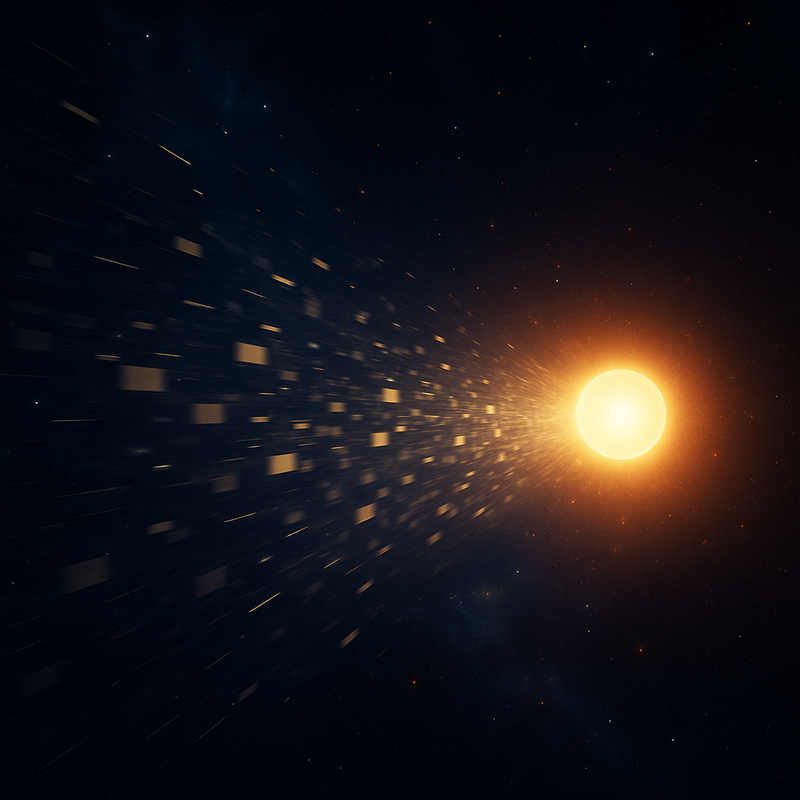Physicists often remark that a photon “knows nothing of time.” It is emitted. It is absorbed. That is all. But hidden between those two events — the vast interval we call space and time — lies a set of paradoxes that reveal more about us, the observers, than about the photon itself.
What follows reframes five classic light-based paradoxes in clear language for students, amateur astronomers, and anyone drawn to the mysteries of cosmology.
I. The Infinite Blink
A photon released by a red giant ten billion years ago seems to travel across a widening universe before reaching your telescope. Yet from the photon’s own point of view, there is no journey. In relativity, a massless particle experiences zero proper time. Its emission and its absorption are the same moment. The “distance” is our construction, not its experience.
For the observer, the photon appears ancient, redshifted, weathered by cosmic expansion. But the photon itself has not “aged.” It simply is, timeless in a single, continuous presence.
II. How Light Arrives from a Receding Past
If the universe is expanding, and distant galaxies recede faster than light beyond the cosmological horizon, how can we still receive their photons? Because the expansion rate has changed. Early on, space expanded more slowly, allowing photons to get ahead before the “river” of spacetime sped up.
Think of paddling upstream in a river. Even if the current eventually becomes too strong, you still make progress in the slower part. In the same way, ancient photons launched when the cosmic current was weaker still reach us now, despite today’s faster expansion.
III. Light Degrades Without Aging
When those photons finally arrive, they are not pristine. They are dimmed and stretched. Flux drops with distance; wavelengths redshift from ultraviolet to infrared; and context disappears — the star that emitted them may have long since died.
Thus your telescope does not show the original event but its trace: a ghost carrying the shape of a history that has aged without it.
IV. The Photon as Transmission, Not Traveler
A photon is not a courier of information. It is the information. It does not “cross” space as an object; it threads space as a process — more like a handshake than a package. This is why quantum theory treats photons as field excitations rather than tiny bullets: they are events of correlation, not self-contained messengers.
V. The Eye of the Planet
When we observe a galaxy smeared across our sensor from 12 billion years ago, we are not looking at a static object “back then.” We are measuring a tension: between what the photon did not experience and what we do now. Astronomy becomes, in this sense, an act of memory recovery — drawing meaning from the one entity that never forgets because it never had to learn.
Conclusion
Light’s paradoxes are not only puzzles for physics; they are lessons in perception. We think in terms of travel, aging, and carriers. But at the edge of time, photons show us a different story: immediacy without duration, transmission without journey.
For every student of light, these paradoxes are not riddles to be solved but vantage points — ways to see both the cosmos and our own assumptions with clearer eyes.

